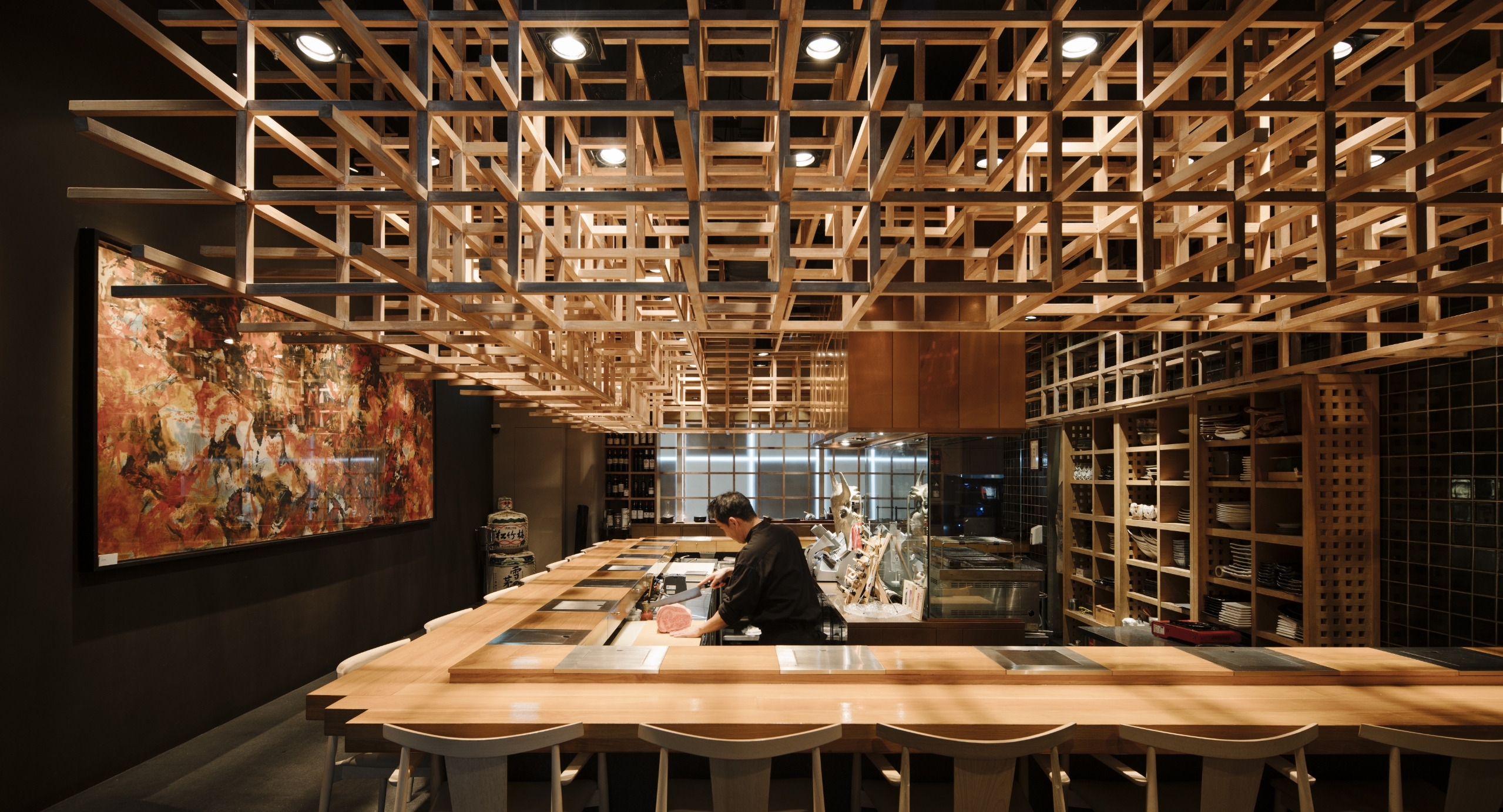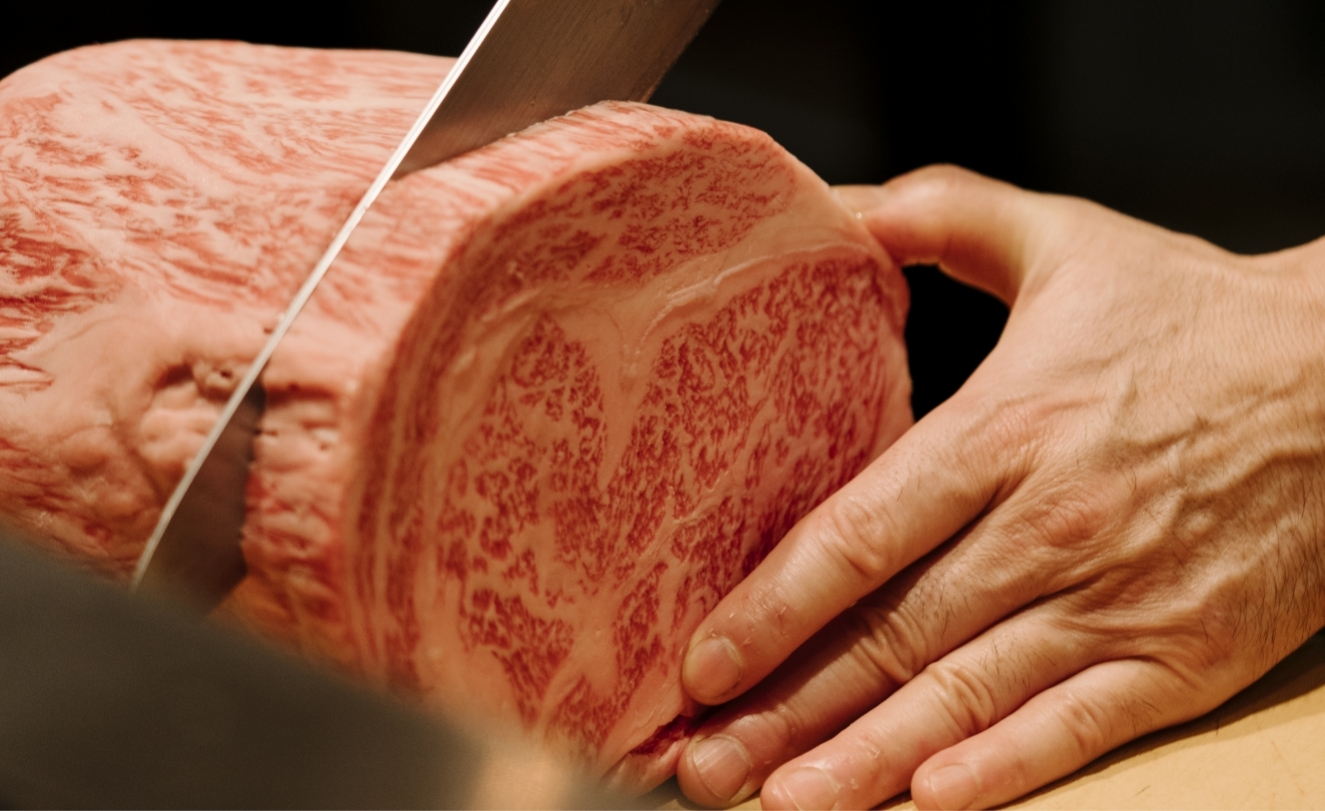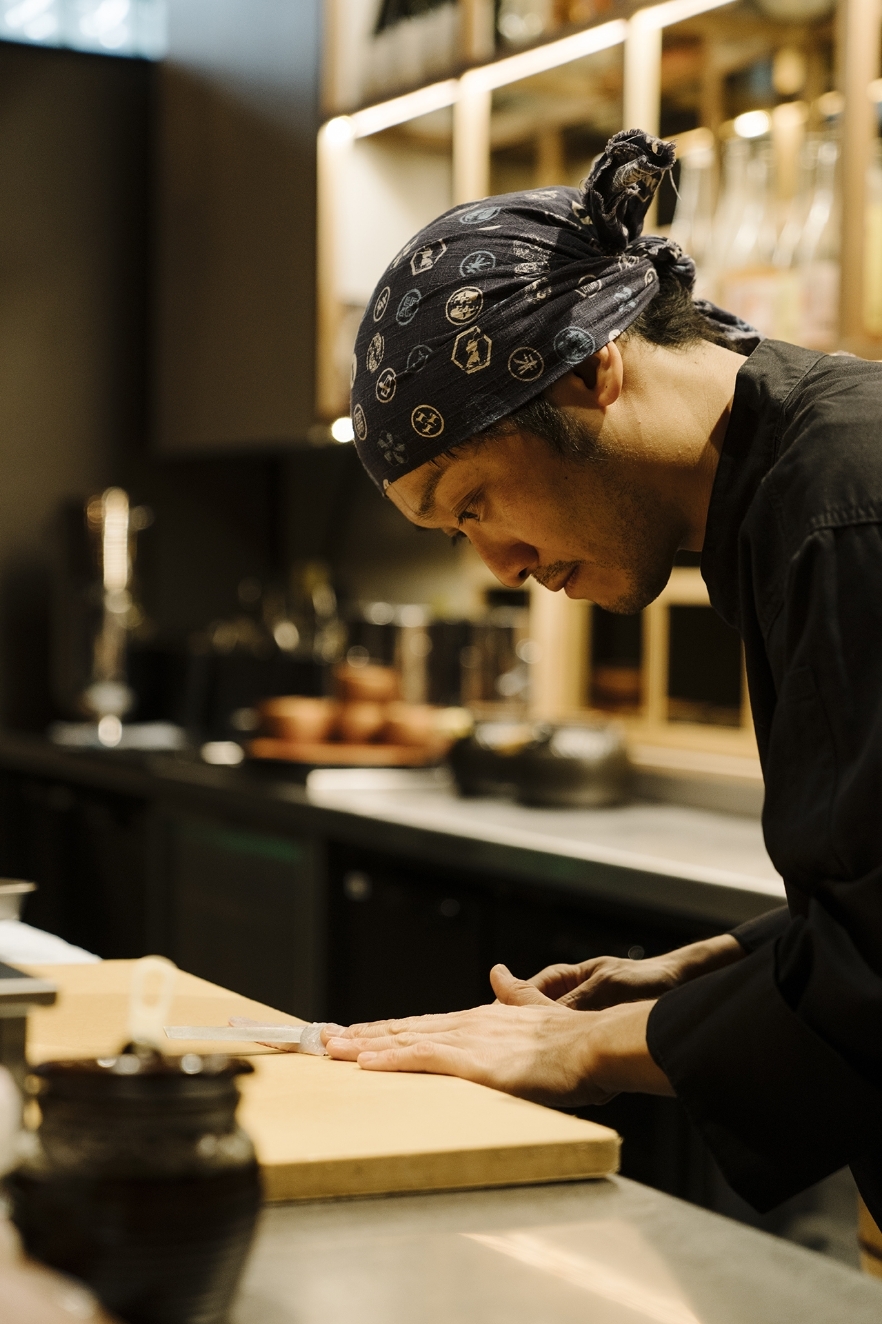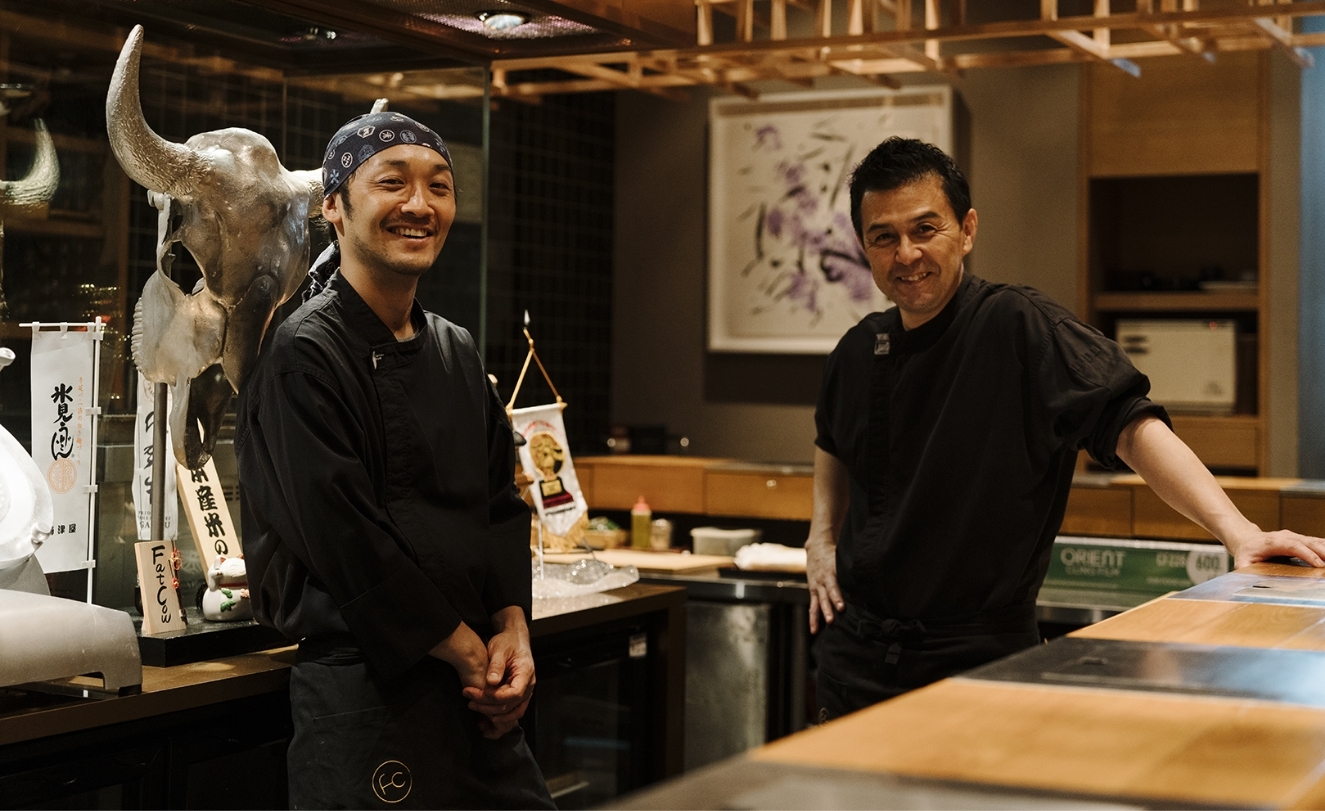Hidden Luxury and Culinary Beauty

Hidden Luxury and Culinary Beauty
Known for its deliciously decadent donburis, premium ingredients and novel location, Fat Cow is a firm favourite among foodies.
It is unusual to say the least, to find a high-end contemporary Japanese restaurant within a medical centre. Its whimsical name is even more intriguing. However, upon a little analysis, these quirky traits form their own logic. For one, the location in a development that brings together science, craftmanship and even artistry ties in quite well with the idea of culinary excellence and the skilful preparation of Chef’s creations. The name Fat Cow is an open and honest acknowledgement of the rich, highly prized cuts of beef that the restaurant is famous for.
The restaurant takes a contemporary approach to the Japanese “Wabi-Sabi” concept – the art of finding beauty in things modest, simple and humble - to create a multi-sensory treat. Stepping into the restaurant, one is brought into a calm oasis. The interior features a beautifully intricate latticework in the theatre, private dining area and Chef’s table. And while the décor is admittedly a talking point, the focus here is all on the food, and deservedly so, as an elevated Japanese dining experience awaits. The fine dining Japanese steak house is known for its subtly innovative twists in the menu, developed by Head Chef Shigeru Kasajima and Chef Fukashi Adachi.
According to Head Chef Shigeru, “We mix tradition and modern ideas so that diners have a new and interesting experience.” Having said that, the offerings are kept as simple as possible, adds Chef Fukashi, who believes that Japanese cuisine is about subtraction rather than addition. The focus, he says is bringing out the quality of each ingredient. Chef Fukashi, a native of Shizuoka who has spent many years cooking in the USA and South East Asia, is passionate about introducing local guests to the beauty of Japanese produce. “We want the purity of the food to stand out,” he says.
Cooking, he notes, is more about doing more with less so that the best of each ingredient is drawn out through specific cooking techniques or complementary flavours. This belief is particularly evident in their Chef’s Table omakase offerings which may span from a sampling of the freshest air-flown fish sashimi to a tasting flight of beef sourced directly from Japan.
Quality is pertinent in developing the menu, says Chef Shigeru, who takes pains to source only from the best sources – and from farmers that he makes personal connections with. In fact, even as we conduct the interview, Chef Shigeru is freshly returned from a trip to one of the farms that produces Ohmi beef, known for its fine marbling, tender flesh and sweet, rich flavour. “Not all farms produce the same quality of beef,” he points out, which is why it is important for him to get to know the producers of the beef – or any other ingredients – so as to ensure the restaurant is able to procure the premium quality that meets their preference and standards.

This deep knowledge of each ingredient is also an important element of the dining experience, he adds, as diners are more sophisticated and curious about their food. Whether it is the origin of a scallop or a serving of beef. “Customers are always seeking to learn more about the Japanese culture and where our ingredients are sourced from. It is through the interactions with my customers that I better understand their dining preferences and palettes to tweak my menu to suit them better..” Chef Shigeru, who was born in Tokyo, spent 14 years as a French chef and 17 years as a Japanese chef. His years of experience and wide-ranging global exposure lends technical expertise and an international influence to Fat Cow’s menu creations.
Together the chefs believe in offering nature’s best – whether it be in the full unctuous flavour of a prime Wagyu cut, the sweet clean taste of sea bream in season or the perfume of a perfect Japanese Momotaro tomato.

Chef's Seasonal Recommendations
Seasonality plays a very big role in Fat Cow’s offerings. While many of these seafood offerings are available all year round, many are at their best at certain times of the year. This ensures that ingredients are at their optimal freshness and flavour. Chef Shigeru and Fukashi shares what to look out for each season.
Spring
- Amaebi (sweet shrimp)
- Hotaru ika (firefly squid)
- Hirasu (baby sardines)
Summer
- Unagi (freshwater eel)
- Kisu (Japanese whiting)
- Uni (sea urchin)
Autumn
- Ikura (salmon roe)
- Sanma (pacific saury)
- Saba (mackerel)
Winter
- Ankimo (monkfish liver)
- Maguro (tuna)
- Buri (yellowtail)

The information provided in this article is meant purely for general information purposes only and may not be used as a substitute for medical advice, diagnosis or treatment. If you have any questions or concerns about your health, please seek the advice of your doctor or qualified healthcare provider. The views, information or opinions expressed in this article are solely that of the writer and the interviewees and do not necessarily reflect those of, and are not endorsed by, Camden Medical Centre.